The carpet is divided into three parts, and the shades go from light to dark;
An exercise in style without a doubt, making this piece a nugget in the world of carpets.
It leads us to believe that it comes from a family workshop rather than a large city workshop that, working in rigor, would not have tolerated this kind of "pictorial" fantasy.
Museum quality piece.
This beautiful 19th century carpet measures 118 cm wide by 202 cm long, in collection condition.
A large medallion, with two pendants, placed like a rosette of flowers, bouquets, branches and fine interlacing make up this wonderful wool painting, sublimated by its many colors.
Note that if we observe carefully, the pendants, the rosette, the borders, we will notice that this Kirman is not completely symmetrical like 99% of these carpets, which gives it an additional interest in its particular creation.
Although originating from the Iranian city of Kirman from which these carpets bear the name, a large production region, no piece is today more than one hundred and fifty years old. Indeed, carpet weaving only started in this region around 1880.
Our model, although showing slight general wear, is nonetheless a sublime artifact of Persian culture.
Knotted in the 19th century under the Kadjar dynasty, a dynasty present in the 18th and 19th centuries and which ended in 1925.
The Kirman is often decorated with flowers and most of the time has a medallion that stands out on a plain background.
## The medallion motifs are repeated in the border and the four corners. Some of these carpets also feature large animal scenes.
Our model, a kirman originates from the city of the same name, and features a magnificent medallion with pendants and interlacing, of great delicacy and beauty. Kerman is the largest city in the South-East of Iran, and is the capital of the province of the same name.
The reputation of Kirman carpets and raver carpets is due to the excellence of the "Ostads", these incredibly skilled cartoon designers who have kept the sense of tradition of large Persian carpets and who still practice today.
The deep harmony of colors results from a perfect dosage that testifies to the immense creativity of the Kirman craftsmen.
The finest carpets are the most admirable and the most beautiful, the more knots there are, the finer the carpet, and sought after by amateurs and collectors.
## Some Kirman are called Laver, alteration of Raver, a town near Kirman where carpets are knotted in a very neat way.
The old Laver are characterized by a large polylobed medallion, roughly oval or rhomboidal on an ivory background (our model), or a decoration of vases placed in tiers.
These two types of carpets are extremely rare today and have a chromatic delicacy particular to old Kirman.
This category of carpets is rightly among the best of Iranian production renowned throughout the world.
Fineness of execution, delicacy of colors, quality of materials used make it a collector's item.
This piece in very good condition for its age, without restoration, has been cleaned professionally and in an ecological way.
Dimensions: Width: 118 cm (46") x Length: 202 cm (79"), Thickness: 6 mm In very good condition, this rug was hand-knotted in the 19th century during the reign of the Qajar dynasty.
## The Qajar dynasty or Qajars: (Qājār, Qadjar, Qajar, Persian: قاجار) is a Turkmen dynasty that reigned over Iran from 1786 to 1925.
FREE DELIVERY FOR FRANCE as for all of our rugs!
FR 0€ / EUR 25€ / WORLD 50€ For any information or other photos, please call me at 06 13 36 09 30 or winsteinprovence@gmail.com .www.winsteinprovence.com
Texts, photos WINSTEIN, rights reserved
ref winstein 1120



























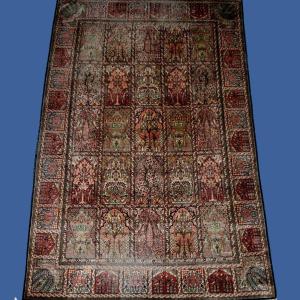

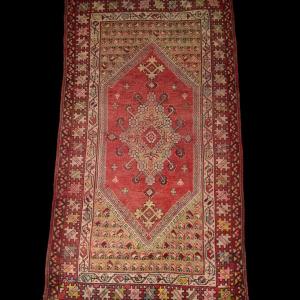
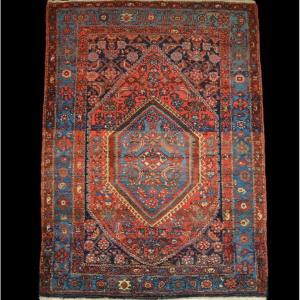
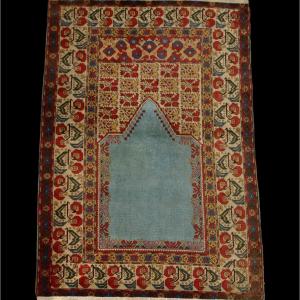
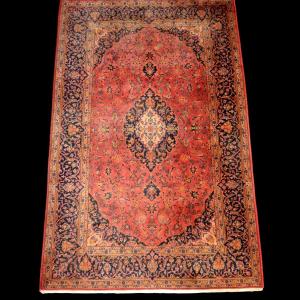


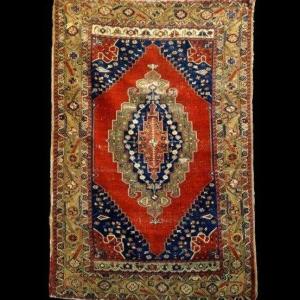




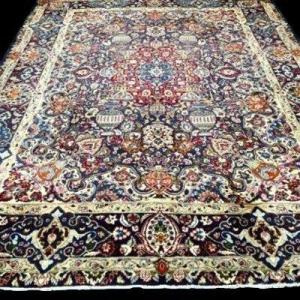









 Le Magazine de PROANTIC
Le Magazine de PROANTIC TRÉSORS Magazine
TRÉSORS Magazine Rivista Artiquariato
Rivista Artiquariato